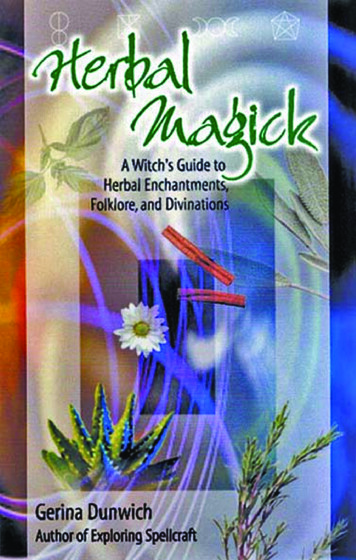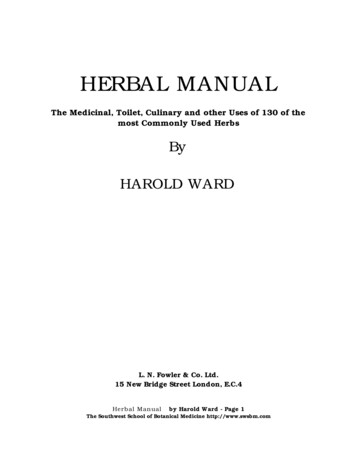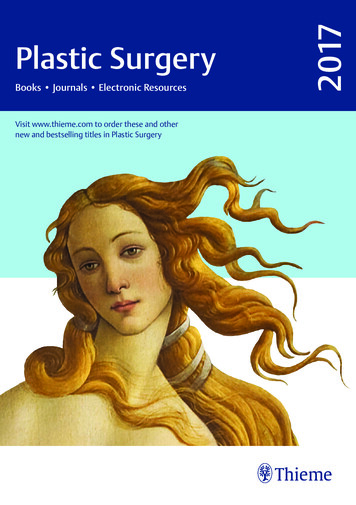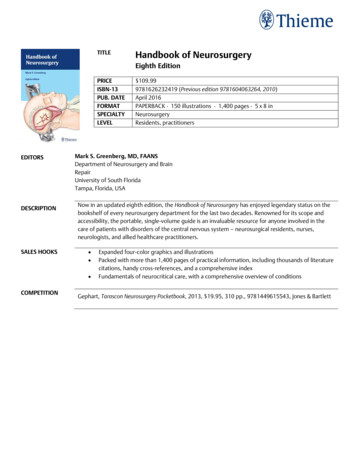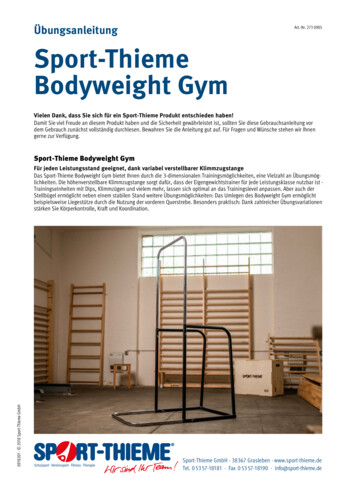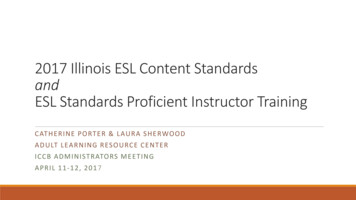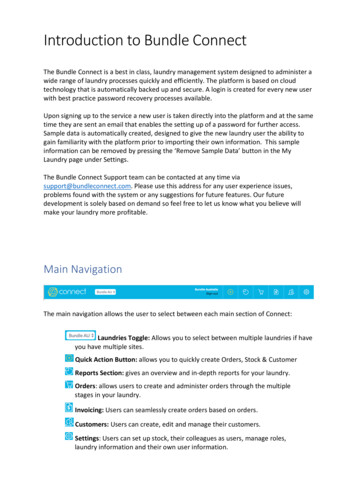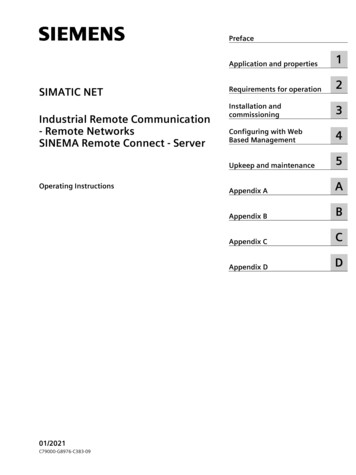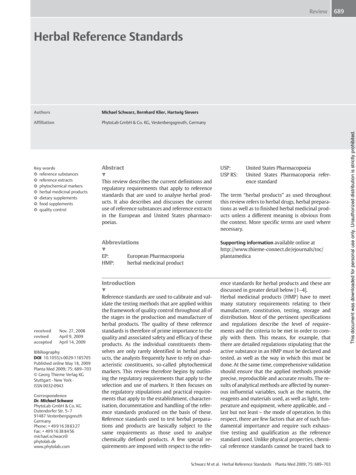
Transcription
Review689AuthorsMichael Schwarz, Bernhard Klier, Hartwig SieversAffiliationPhytoLab GmbH & Co. KG, Vestenbergsgreuth, GermanyKey words" reference substancesl" reference extractsl" phytochemical markersl" herbal medicinal productsl" dietary supplementsl" food supplementsl" quality controllAbstractUSP:USP RS:!This review describes the current definitions andregulatory requirements that apply to referencestandards that are used to analyse herbal products. It also describes and discusses the currentuse of reference substances and reference extractsin the European and United States pharmacopoeias.AbbreviationsEuropean Pharmacopoeiaherbal medicinal productIntroduction!receivedrevisedacceptedNov. 27, 2008April 9, 2009April 14, 2009BibliographyDOI 10.1055/s-0029-1185705Published online May 18, 2009Planta Med 2009; 75: 689–703 Georg Thieme Verlag KGStuttgart · New York ·ISSN 0032‑0943CorrespondenceDr. Michael SchwarzPhytoLab GmbH & Co. KGDutendorfer Str. 5–791487 VestenbergsgreuthGermanyPhone: 49 9 16 38 83 27Fax: 49 9 16 38 84 56michael.schwarz@phytolab.dewww.phytolab.comThe term “herbal products” as used throughoutthis review refers to herbal drugs, herbal preparations as well as to finished herbal medicinal products unless a different meaning is obvious fromthe context. More specific terms are used wherenecessary.Supporting information available online amedica!EP:HMP:United States PharmacopoeiaUnited States Pharmacopoeia reference standardReference standards are used to calibrate and validate the testing methods that are applied withinthe framework of quality control throughout all ofthe stages in the production and manufacture ofherbal products. The quality of these referencestandards is therefore of prime importance to thequality and associated safety and efficacy of theseproducts. As the individual constituents themselves are only rarely identified in herbal products, the analysts frequently have to rely on characteristic constituents, so-called phytochemicalmarkers. This review therefore begins by outlining the regulatory requirements that apply to theselection and use of markers. It then focuses onthe regulatory stipulations and practical requirements that apply to the establishment, characterisation, documentation and handling of the reference standards produced on the basis of these.Reference standards used to test herbal preparations and products are basically subject to thesame requirements as those used to analysechemically defined products. A few special requirements are imposed with respect to the refer-ence standards for herbal products and these arediscussed in greater detail below [1–4].Herbal medicinal products (HMP) have to meetmany statutory requirements relating to theirmanufacture, constitution, testing, storage anddistribution. Most of the pertinent specificationsand regulations describe the level of requirements and the criteria to be met in order to comply with them. This means, for example, thatthere are detailed regulations stipulating that theactive substance in an HMP must be declared andtested, as well as the way in which this must bedone. At the same time, comprehensive validationshould ensure that the applied methods provideprecise, reproducible and accurate results. The results of analytical methods are affected by numerous influential variables, such as the matrix, thereagents and materials used, as well as light, temperature and equipment, where applicable, and –last but not least – the mode of operation. In thisrespect, there are few factors that are of such fundamental importance and require such exhaustive testing and qualification as the referencestandard used. Unlike physical properties, chemical reference standards cannot be traced back toSchwarz M et al. Herbal Reference Standards Planta Med 2009; 75: 689–703This document was downloaded for personal use only. Unauthorized distribution is strictly prohibited.Herbal Reference Standards
Reviewinternational prototypes. Their suitability as points of referencefor the determination of a characteristic, e.g., “substance XY content” ensues from a multitude of factors, which can frequentlyonly be determined by means of relative methods. This problemis exacerbated by the diversity of possible sources for one and thesame herbal reference standard. The requirement relating to theactive substance content of an HMP (accuracy of 5 %) is a hurdlethat can frequently only be met with a great deal of effort and expense. Traditional herbal combination products typically containing 3 or more herbal preparations are even more challenging.It is not unusual that the marker substances in such combinationproducts are present at a trace level only. Considering the 50 %tolerances that are usually accepted in trace analysis by way ofcontrast, the magnitude of the challenge facing guideline-compliant analysis of herbal products today becomes evident.Alarmingly, little attention is given to the quality of the standardsused in pharmacological or toxicological research, on the otherhand, in spite of the fact that the test results obtained here oftenconstitute the basis to assess the safety and efficacy of herbalproducts.Regulatory Requirements and Definitions!While the legal framework and detailed quality requirements areclearly regulated for HMP in the EU, in the USA and in many othercountries, these have not yet been defined to the same extent forfood supplements (covered by food law within the EU) or dietarysupplements in the USA (covered by the Dietary Supplementsand Health Education Act [5]), and there are good reasons forthis. However, as health-promoting functions and effects arebeing claimed to an increasing extent, it is to be expected thatquality requirements for such products be tightened up in the future. This has already taken place in the USA with the introduction of cGMP for dietary supplements in June 2007 [6]. The quality of reference standards and the pertinent documentation playan important role in this respect. In contrast to this, there are noexplicit rulings for the quality of plant-based food supplements inthe EU, apart from the general quality requirements that apply toall foodstuffs. Nevertheless, the quality aspect has been broughtup more frequently in discussion papers and drafts in recentyears; examples include the current EFSA draft guidance document for the safety assessment of botanicals and botanical preparations used in food supplements [7] and the European Commissionʼs Terms of Reference for the assessment of claims by theEFSA [8].As far as the manufacturers of drugs and medicinal products areconcerned, the guidelines drawn up by the WHO, ISO and NISTserve as guiding principles, and the monographs of such internationally acknowledged pharmacopoeias as the PharmacopoeiaEuropaea (Ph. Eur. or EP) [9] and the United States Pharmacopoeia (USP) [10] are binding within their respective geographicalscopes. There are no specific EMEA or ICH guidelines for reference standards yet. A few fundamental requirements for the establishment, documentation and use of primary and secondarystandards within the framework of manufacturing and testing active pharmaceutical ingredients (APIs) can be found in the Notefor Guidance on Good Manufacturing Practice for Active Pharmaceutical Ingredients (CPMP/ICH/4106/00) [11].The ISO Guides 30–35 of the International Organisation forStandadization are of essential importance to every manufacturer or user of reference standards [12–17]. Although theseSchwarz M et al. Herbal Reference StandardsPlanta Med 2009; 75: 689–703documents are not legally binding, they represent the generallyaccepted international state of the art and therefore constitutethe basis for the use of reference standards where no special,mandatory regulations exist. This is the case in the EuropeanPharmacopoeia and USP, for example, in which the chapters onreference standards primarily describe details and conventionsrelating to the handling of pharmacopoeial standards, whileagreeing with the requirements of the ISO Guides to a great extent regarding the technical principles." ISO Guide 30: 1992: Terms and definitions used in connectionwith reference materials." ISO Guide 31: 2000: Reference materials – contents of certificates and labels." ISO Guide 32: 1997: Calibration in analytical chemistry and useof certified reference materials." ISO Guide 33: 2000: Uses of certified reference materials." ISO Guide 34: 2000: General requirements for the competenceof reference materials producers." ISO Guide 35: 2006: Reference materials – general and statistical principles for certification.ISO Guide 30: 1992 defines a reference material as follows: “Material or substance one or more of whose property values are sufficiently homogeneous and well established to be used for thecalibration of an apparatus, the assessment of a measurementmethod, or for assigning values to materials.” At the same time, areference material can also be a defined individual substance.ISO Guide 30 defines a certified reference material (CRM) as follows: “Reference material, accompanied by a certificate, one ormore of whose property values are certified by a procedurewhich establishes its traceability to an accurate realization ofthe unit in which the property values are expressed, and forwhich each certified value is accompanied by an uncertainty at astated level of confidence.”Of formal significance is the fact that each set of rules and standards – ISO Guides and EP – contains cross-references to the other one, which means that the requirements of the ISO Guides areespecially relevant to the pharmaceutical sector, at least indirectly. This is particularly important where standards that havebeen established by the manufacturer himself, or a third party,are used for testing instead of pharmacopoeial standards. On theother hand, there are also some important deviations, as neitherthe EP nor the USP include information about the uncertainty ofthe assigned value of a reference standard with the respectivedocumentation, “since the precision of the method and uncertainty of the value attributed to the reference standard are takeninto account when setting the limit(s) in a monograph” [9].The stipulations laid down in the EP Section 5.12 “Referencestandards” apply to reference standards throughout the area ofapplication of the European Pharmacopoeia, i.e., in the memberstates of the European Pharmacopoeia Commission (36 states atthe moment). Although the rider “This chapter is published for information” is attached to this section, it has a virtually binding effect for the pharmaceutical sector within the pharmacopoeiaʼsscope of application. Any deviations from these stipulations mustbe documented with evidence of their equivalence.According to the definition laid down in the European Pharmacopoeia: “Reference standards are shown to be suitable for their intended purpose; they are not necessarily suitable for other purposes. If a reference standard is to be used for any purpose otherthan that of which it has been established, its suitability for thenew use has to be fully demonstrated. Any value assigned to a ref-This document was downloaded for personal use only. Unauthorized distribution is strictly prohibited.690
erence standard is valid for the intended use and not necessarilyfor other uses.”This applies in full consequence to CRS standards of the EuropeanPharmacopoeia. CRS (chemical reference substances) are only regarded as having validity with respect to the tests for which theyare specified in the pertinent monographs. The CRS standardspecified in an herbal drug monograph must therefore qualifybefore it can be used to test an extract made from the drug, forexample.Within the European Pharmacopoeiaʼs scope of application, theterm “reference standard” is used to refer to reference substances,reference preparations and reference spectra. This means thatthe reference extracts increasingly used in the testing of herbalproducts and described in certain pharmacopoeia monographsare equivalent to reference substances by definition.Reference standards that have been established under the aegisof and released by the European Pharmacopoeia Commissionare generally referred to as European Pharmacopoeia ReferenceStandards. European Pharmacopoeia Chemical Reference Substances are primary reference standards by definition (with theexception of certain antibiotics, which are calibrated in international units).A primary standard is defined as being: “A standard shown tohave suitable properties for the intended use, the demonstrationof suitability being made without comparison to an existing standard.” Secondary standards are derived by comparison with primary standards. The term working standard is used to describesecondary standards that serve as standards within the framework of routine analysis. They are derived from primary reference standards and are therefore equivalent to secondary reference standards.The terms internal and external standard do not refer to a qualitative categorisation of a reference standard, but rather to theway in which it is used.Reference standards offered by the EDQM are established andqualified within the framework of an elaborate process. This regularly includes testing in several laboratories, as well as the performance of inter-laboratory tests. As far as the testing of herbaldrugs or preparations is concerned, reference extracts may alsobe used as CRSs. It is necessary to resort to comprehensivelyqualified reference substances for the marker to be quantified inorder to qualify such reference extracts. Interestingly enough, thepertinent passage of text merely refers to these as “ well characterised samples of active constituents or markers”. This formulation fails to stipulate whether these samples refer to primarystandards, which should be the case (the problems associatedwith reference extracts are discussed
09.04.2009 · Reference standards that have been established under the aegis of and released by the European Pharmacopoeia Commission are generally referred to as European Pharmacopoeia Reference Standards. European Pharmacopoeia Chemical Reference Sub-stances are primary reference standards by definition (with the
